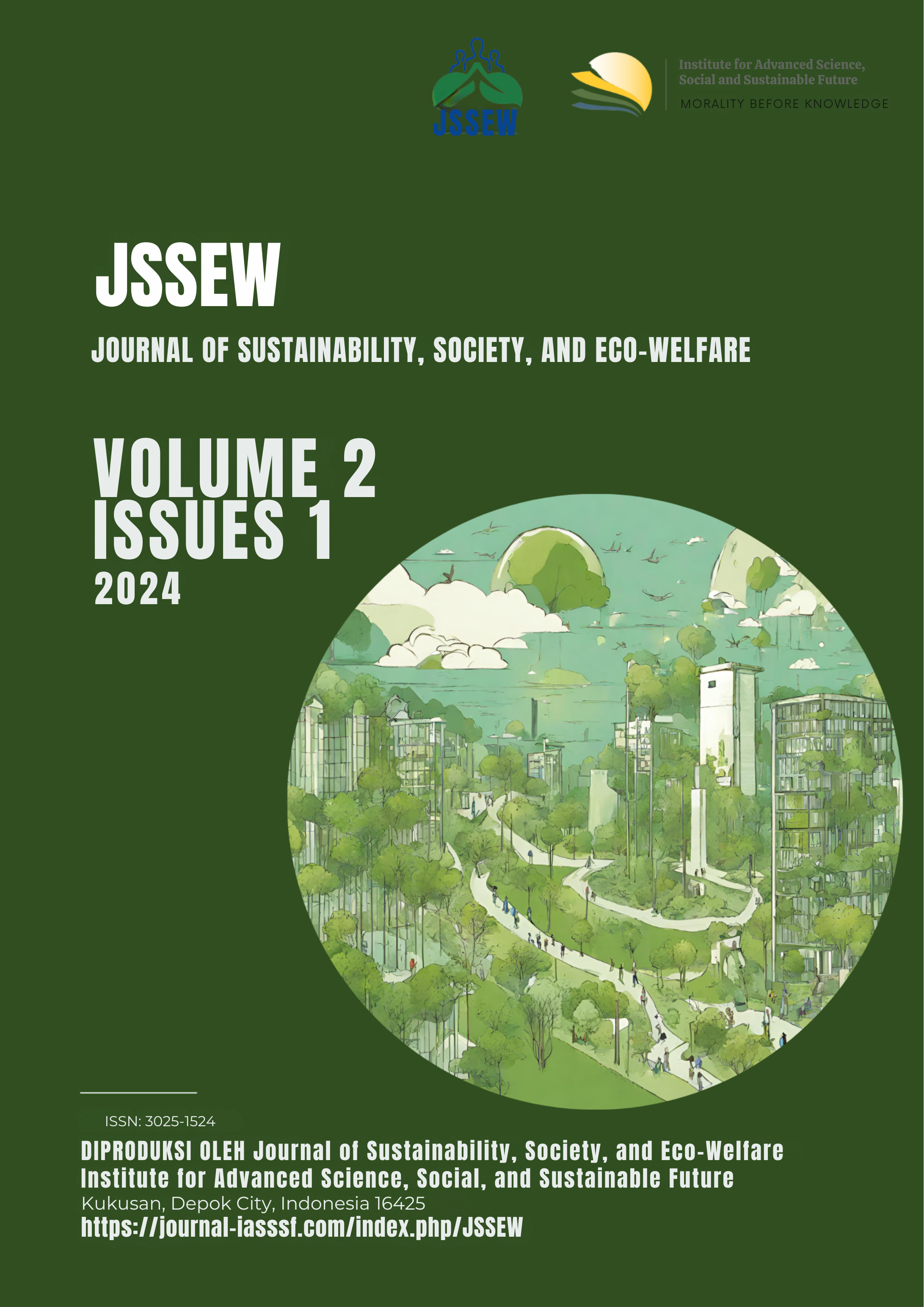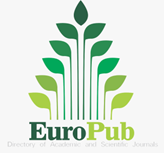Potential application of Batang Garing cultural values of Dayak tribe in Orangutan conservation
DOI:
https://doi.org/10.61511/jssew.v2i1.2024.885Keywords:
Orangutan, Dayak tribe, Batang Garing, conservationAbstract
Background: This is intended to describe the Batang Garing symbol of the Dayak Ngaju tribe in Central Kalimantan as a container for preservation. From the previous study mentioned about Batang Garing, environmental consciousness, this study attempts to identify the cultural values of the Batang Garing tribe in the life of the Dayak tribe and to seek opportunities to apply the cultural values of the Batang Garing Dayak tribe in Orangutan conservation. Methods: This study using qualitative techniques is used to measure rehabilitation and assess the contribution of rehabilitation to conservation. Findings: It can be concluded that the Batang Garing concept is in harmony with the idea of Orangutan conservation. The construction of meaning that is carried out provides space for collaboration between local values and modern values in the conservation agenda, it is hoped that this alignment will facilitate the involvement of indigenous peoples in harmony with Orangutan conservation so that they play an active role in conservation because there are several overlapping values. Conclusion: The constructs provided are expected to be useful in forming universal knowledge/which can be understood by the wider community, including policy makers, namely the Government, as well as policy observers, both academics and practitioners regarding the agenda of forest conservation. Novelty/Originality of this Study: The novelty of this study lies in its exploration of the potential application of the Dayak Tribe's Batang Garing cultural values in Orangutan conservation. This research uniquely combines indigenous wisdom with modern conservation efforts, aiming to foster community involvement and promote sustainable natural resource management.
References
Abukari, H., & Mwalyosi, R. B. (2020). Local communities’ perceptions about the impact of protected areas on livelihoods and community development. Global Ecology and Conservation, 22, e00909. https://doi.org/10.1016/j.gecco.2020.e00909
Apandie, C., & Ar, E. D. (2019). Huma Betang: Identitas Moral Kultural Suku Dayak Ngaju Kalimantan Tengah [Huma betang: The cultural moral identity of the Dayak Ngaju tribe in Central Kalimantan]. Journal of Moral and Civic Education, 3(2), 76–91. https://doi.org/10.24036/8851412322019185
Bond, I., Davis, A., Nott, C., Nott, K., & Stuart-Hill, G. (2006). Community based natural resource management manual. WWF Wildlife Management Series, 77.
Chua, L., Harrison, M. E., Fair, H., Milne, S., Palmer, A., Rubis, J., Thung, P., Wich, S., Büscher, B., Cheyne, S. M., Puri, R. K., Schreer, V., Stępień, A., & Meijaard, E. (2020). Conservation and the social sciences: Beyond critique and co-optation. A case study from orangutan conservation. People and Nature, 2(1), 42–60. https://doi.org/10.1002/pan3.10067
Gbedomon, R. C., Floquet, A., Mongbo, R., Salako, V. K., Fandohan, A. B., Assogbadjo, A. E., & Glèlè Kakayi, R. (2016). Socio-economic and ecological outcomes of community-based forest management: A case study from Tobé-Kpobidon forest in Benin, Western Africa. Forest Policy and Economics, 64, 46–55. https://doi.org/10.1016/j.forpol.2016.01.001
Grodzińska-Jurczak, M., & Cent, J. (2011). Can public participation increase nature conservation effectiveness? Innovation: The European Journal of Social Science Research, 24(3), 371–378. https://doi.org/10.1080/13511610.2011.592069
He, S., Yang, L., & Min, Q. (2020). Community participation in nature conservation: The Chinese experience and its implication to national park management. Sustainability (Switzerland), 12(11), 4760. https://doi.org/10.3390/su12114760
Kuriyan, R. (2002). Linking local perceptions of elephants and conservation: Samburu pastoralists in Northern Kenya. Society and Natural Resources, 15(10), 949–957. https://doi.org/10.1080/08941920290107675
Mbise, F. P., & Sosiya, T. (2023). Impact of outreach programmes on the relationship between local people and parks: Perceptions of communities near Tarangire National Park, Tanzania. Global Ecology and Conservation, 42(November 2022), e02411. https://doi.org/10.1016/j.gecco.2023.e02411
Morgans, C. L., Guerrero, A. M., Ancrenaz, M., Meijaard, E., & Wilson, K. A. (2017). Not more, but strategic collaboration needed to conserve Borneo’s Orangutan. Global Ecology and Conservation, 11, 236–246. https://doi.org/10.1016/j.gecco.2017.07.004
Munawaroh, S., Sari, A. Y., Burhanuddin, B., Pangaribuan, C. G. M., Maulia, R., Trisnadiansyah, M. R., Listiawan, Y., & Hendarmawan, H. (2022). Strategi konservasi dalam pengelolaan air untuk menunjang kehidupan masyarakat di sekitar kawasan industri Purwakarta [Conservation Strategies in Water Management to Support the Livelihoods of Communities Around the Purwakarta Industrial Area]. Sawala: Jurnal Pengabdian Masyarakat Pembangunan Sosial, Desa dan Masyarakat, 3(1). https://doi.org/10.24198/sawala.v3i1.35532
Mwamidi, D. M., Nunow, A. A., & Dominguez, P. (2023). Customary ecological conservation of Mwanda-Marungu pastoral commons in Taita Hills, south-west Kenya. African Journal of Range and Forage Science, 40(1), 94–106. https://doi.org/10.2989/10220119.2022.2138972
Obradović, S., Stojanović, V., & Milić, D. (2023). The importance of understanding local community attitudes and perceptions regarding nature conservation. Wetlands, 43(1), 1–16. https://doi.org/10.1007/s13157-022-01652-5
Peranginanangin, L. S. U. (2014). Partisipasi Masyarakat dalam Pengelolaan Kawasan Konservasi [The participation of the community in the management of conservation areas]. JKAP (Journal of Public Policy and Administration), 18(1), 66–78. https://doi.org/10.22146/jkap.6877
Qodriyatun, S. N. (2019). Peran dan partisipasi masyarakat dalam pengelolaan kawasan konservasi secara kolaboratif [The role and participation of the community in collaborative management of conservation areas]. Journal Kajian, 24(1). https://doi.org/10.22212/kajian.v24i1.1858
Rampheri, M. B., & Dube, T. (2021). Local community involvement in nature conservation under the auspices of community-based natural resource management: A state of the art review. African Journal of Ecology, 59(4), 799–808. https://doi.org/10.1111/aje.12801
Ridadiyanah, D., & Subekti, S. (2021). Menelisik Upaya Konservasi Orang Utan Kalimantan di Provinsi Kalimantan Timur Tahun 1991-2015 [Examining the efforts of Orangutan conservation in East Kalimantan Province from 1991 to 2015: A historiographical study]. Historiografi, 2(2), 99–107. https://ejournal3.undip.ac.id/index.php/historiografi/article/view/32856
Riwut, T. (2007). Kalimantan membangun, alam, dan kebudayaan [Kalimantan Builds, Nature, and Culture]. NR Pub.
Roque De Pinho, J., Grilo, C., Boone, R. B., Galvin, K. A., & Snodgrass, J. G. (2014). Influence of aesthetic appreciation of wildlife species on attitudes towards their conservation in Kenyan agropastoralist communities. PLoS ONE, 9(2), 1–10. https://doi.org/10.1371/journal.pone.0088842
Russon, A. E. (2008). Orangutan rehabilitation and reintroduction: Successes, failures, and role in conservation. In S. A. Wich, et al. (Eds.), Orangutans: Geographic variation in behavioral ecology and conservation (online ed.). Oxford University Press. https://doi.org/10.1093/acprof:oso/9780199213276.003.0023
Setyowati, F. M. (2005). Etnobotani masyarakat Dayak Ngaju di daerah Timpah Kalimantan Tengah [The ethnobotany of the Dayak Ngaju community in the Timpah area, Central Kalimantan]. Jurnal Teknologi Lingkungan BPPT, 6(3), 502–510. https://doi.org/10.29122/jtl.v6i3.358
Soekanto, S., & Budi, S. (2014). Sosiologi suatu pengantar (Cetakan ke-46) [Sociology: An Introduction (46th Edition)]. Rajawali Pers.
Sukiada, K. (2016). Sistem medis tradisional suku Dayak dalam kepercayaan Hindu Kaharingan di Kota Palangkaraya, Provinsi Kalimantan Tengah [The Traditional Medical System of the Dayak Tribe in the Hindu Kaharingan Belief in Palangkaraya City, Central Kalimantan Province]. Dharmasmrti: Jurnal Ilmu Agama dan Kebudayaan, 14(27). https://doi.org/10.32795/ds.v14i27.47
Sutopo, H. B. (2006). Metodologi penelitian kualitatif: Dasar teori dan terapannya dalam penelitian [Qualitative Research Methodology: Theoretical Foundations and Its Application in Research]. Sebelas Maret University Press.
Usop, L. S. (2020). The role of local wisdom of the Dayak Ngaju community in preserving Pahewan (sacred forest) in Central Kalimantan. Enggang: Journal of Education, Language, Literature, Art, and Culture, 1(1), 89–95. https://doi.org/10.37304/enggang.v1i1.2465
Wardani, L. K., Sitindjak, R. H. I., & Nilasari, P. F. (2020). Sustainability of Betang house’s cultural wisdom in Central Kalimantan. KnE Social Sciences, 4(12), 46–58. https://doi.org/10.18502/kss.v4i12.7582
Wulandari, C., Yuwono, S. B., Bakri, S., Febryano, I. G., Agustin, Y., Kuswandono, K., Sirait, E. R. N. S., & Rusdianto, R. (2023). Pengembangan partisipasi masyarakat dalam kemitraan konservasi pemulihan ekosistem rawa Bunder di Taman Nasional Way Kambas (TNWK) [Development of Community Participation in Conservation Partnership for the Restoration of the Bunder Swamp Ecosystem in Way Kambas National Park (TNWK)]. Jurnal Pengabdian Fakultas Pertanian Universitas Lampung, 2(1). https://doi.org/10.23960/jpfp.v2i1.6411
Wurdianto, K., Norsandi, D., & Fitriana, E. (2022). Etnopedagogi Batang Garing suku Dayak Ngaju sebagai nilai pendidikan karakter peduli lingkungan [The Ethnopedagogy of Batang Garing of the Dayak Ngaju Tribe as a Value of Character Education for Environmental Awareness]. Scaffolding: Jurnal Pendidikan Islam dan Multikulturalisme, 4(3). https://doi.org/10.37680/scaffolding.v4i3.1936
Yuliana, Y. (2022). Konstruksi sosiologis tentang Batang Garing sebagai jiwa pembangunan berkelanjutan, Kalimantan Tengah [Sociological Construction of Batang Garing as the Soul of Sustainable Development, Central Kalimantan]. Prosiding Seminar Nasional Universitas PGRI Palangka Raya "Green Economy dan Pembangunan Berkelanjutan", 1. https://doi.org/10.54683/puppr.v1i0.27
Yuliani, E. L., Adnan, H., Achdiawan, R., Bakara, D., Heri, V., Sammy, J., Salim, M. A., & Sunderland, T. (2018). The roles of traditional knowledge systems in orang-utan Pongo spp. and forest conservation: A case study of Danau Sentarum, West Kalimantan, Indonesia. Oryx, 52(1), 156–165. https://doi.org/10.1017/S003060531600063602/pan3.10072
Downloads
Published
How to Cite
Issue
Section
Citation Check
License
Copyright (c) 2024 Journal of Sustainability, Society, and Eco-Welfare

This work is licensed under a Creative Commons Attribution 4.0 International License.















